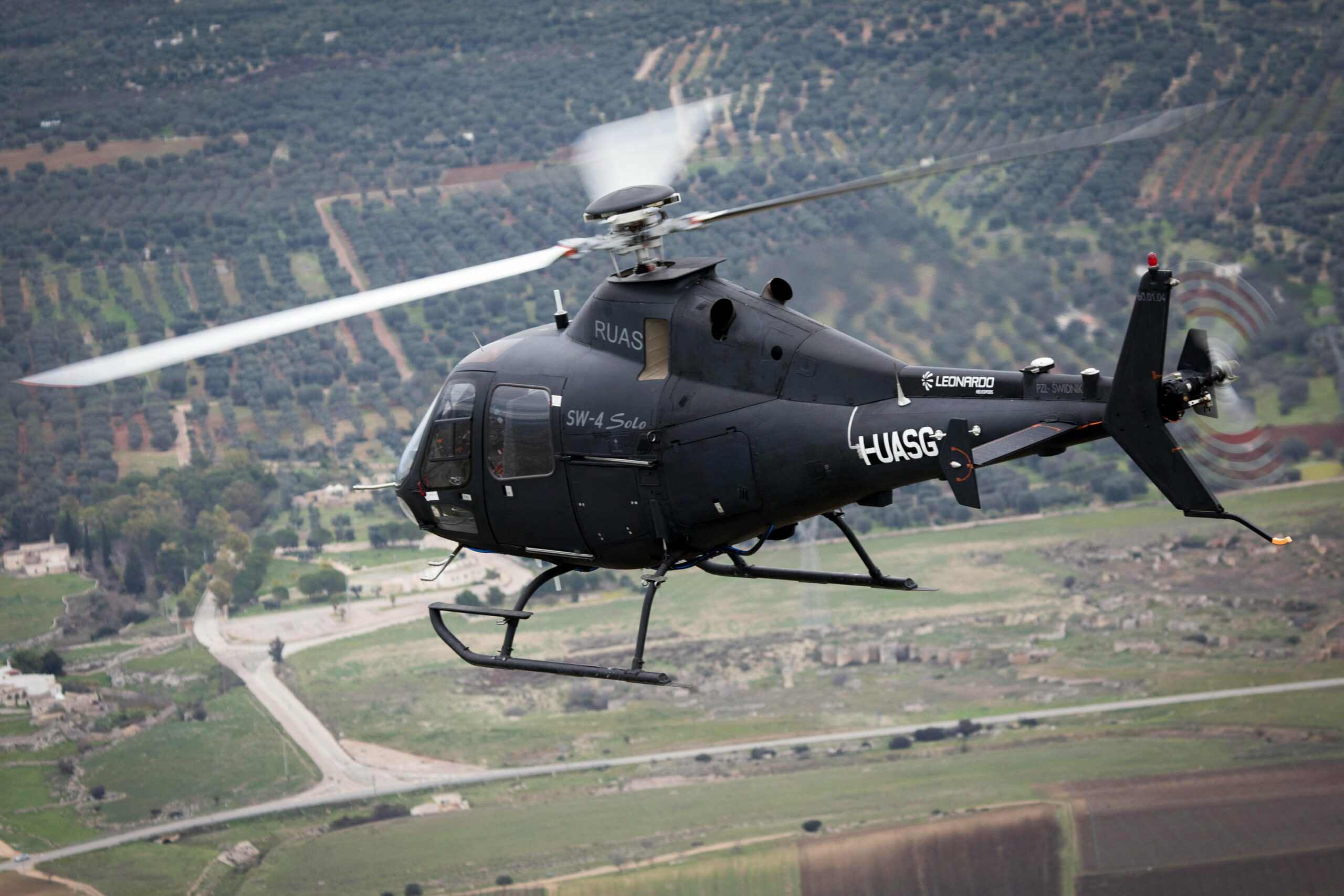How Leonardo and Telespazio will fly with maxi civilian drones

Drones enter air traffic management: this is the goal of Uranus, the research project, funded by ASI with the technical support of ENAV, and carried out by Telespazio in collaboration with Leonardo
Drones integrated into civil air space.
This is the goal of Uranus (Uas / Rpas integrated into the NaziOnale ATM system): the research project, funded by the Italian Space Agency (ASI), with the technical support of ENAV, and carried out by Telespazio – a joint venture between Leonardo ( 67%) and Thales (33%) in collaboration with Leonardo.
The project has reached the stage of flight tests. Through the use of Gnss systems, such as Gps, Egnos and Galileo, the inclusion in the air traffic management system of remotely piloted aircraft with a take-off weight exceeding 150 kg and used for civil operations.
On 6 May Leonardo and Telespazio presented the system and carried out a test with Leonardo's SW-4 Solo remote control helicopter at Grottaglie airport. At the Taranto site, in addition to flight tests, the solutions of Uranus were developed and tested.
"With our systems, which are evolving thanks to the introduction of new enabling technologies, such as Artificial Intelligence and Big Data, we are able to design new solutions to meet the challenges related to the integration of drones in civil airspace" commented Laurent Sissmann, Senior Vice President Unmanned Systems Leonardo.
"An evolution that fits into a promising market, considering that last year, despite the impact of the pandemic, the market value for professional drones was close to 100 million euros" highlights Il Sole 24 Ore .
All the details.
THE TARGET
The goal of the Urano project is "to guarantee adequate safety standards and maximum precision in every phase of flight through the use of satellite navigation systems, in particular Galileo, to Rpas and Uas remotely piloted aircraft, integrating them into the national ATM air traffic management ”specifies the joint note .
THE FINANCING OF ASI
"The Uranus project is funded under the National Satellite Navigation Program for Civil Aviation, defined by the Italian Space Agency and the National Authority for Flight Authorization, which aims to promote technological and application developments deriving from the implementation of satellite navigation within the Air Traffic Management systems, with benefits in terms of increased traffic capacity, increased safety and accuracy of navigation "explained Roberto Formaro, Program Director of the Italian Space Agency .
DESIGN AND DEVELOPMENT ENTRUSTED TO TELESPAZIO AND LEONARDO
With the support of the partners Planetek and the Aerospace Technological District (DTA), Leonardo and Telespazio conducted the research activities, through the design, development, verification and validation of a prototype system to test and demonstrate the advantages of using satellite navigation systems for drone missions integrated into the ATM system.
THE MISSIONS
“What is the final fallout of all this? The delivery of goods, the monitoring of infrastructures that can be approached with drones without human intervention, the supply of medical goods in an emergency situation, innovative services. As for the system to be fully operational, it is necessary to wait for the definition of the part of the rules that must go together with the technological one ”reports Il Sole 24 Ore.
THE CONTRIBUTION OF ENAV
As part of the project, ENAV participated by providing the necessary support, monitoring and technical review of operations. “We can now speak of a new path undertaken by ENAV, that of Urban Air Traffic Management. We are working for the integration between two fundamental Layers such as conventional traffic control and that dedicated to drones ”said Maurizio Paggetti, Chief Operating Officer ENAV and CEO of D-Flight .
FLIGHT TESTS WITH THE SW-4 SOLO HELICOPTER
Flight tests were performed with Leonardo's SW-4 Solo remote control helicopter. In particular, the optional piloted multirole demonstrator allowed the development and customization of tools such as the Virtual Cockpit, an interface from which it is possible to monitor GNSS performance during the operation of a drone; the GNSS Monitoring Tool, with which it is possible to monitor the performance of the navigation systems in the geographical areas of interest and the integration of the signals coming from the drone and the GNSS parameters directly on the platform used for air traffic control operations.
THE USE OF CONSTELLATIONS INCREASES PERFORMANCE
During the project, a demonstrator prototype was developed based on a GNSS system in a double constellation configuration, able to exploit the characteristics of the Gps / Egnos system and the performance upgrade of Galileo, the European satellite navigation system. The results obtained show how both Gps / Egnos and Galileo constitute a fundamental element in guaranteeing safety levels suited to the services that can be developed with the use of these aircraft.
Therefore “The results obtained from the tests have highlighted the value of the performance of the demonstrator prototype both in the configuration with the use of Gps / Egnos and in that with Galileo. The results clearly show how the use of constellations, in the configuration called multi-constellation, increases the performance and the integrity level of the position data, ensuring an adequate level of safety and in line with the mission and operational requirements "has underlined Marco Brancati, Telespazio's Head of Innovation and Technological Governance.
TOWARDS CERTIFICATION
Finally, the next step is the certification and standardization of the system.
"The activities carried out have already provided the opportunity to collect data, operational experiences and recommendations to face the upcoming certification and standardization activities for the integration of remotely piloted aircraft with air traffic control and management systems, even in airspace. controlled and not segregated ”concluded Roberto Formaro, Program Director of ASI.
This is a machine translation from Italian language of a post published on Start Magazine at the URL https://www.startmag.it/smartcity/come-voleranno-leonardo-e-telespazio-con-i-maxi-droni-civili/ on Mon, 09 May 2022 10:06:29 +0000.
